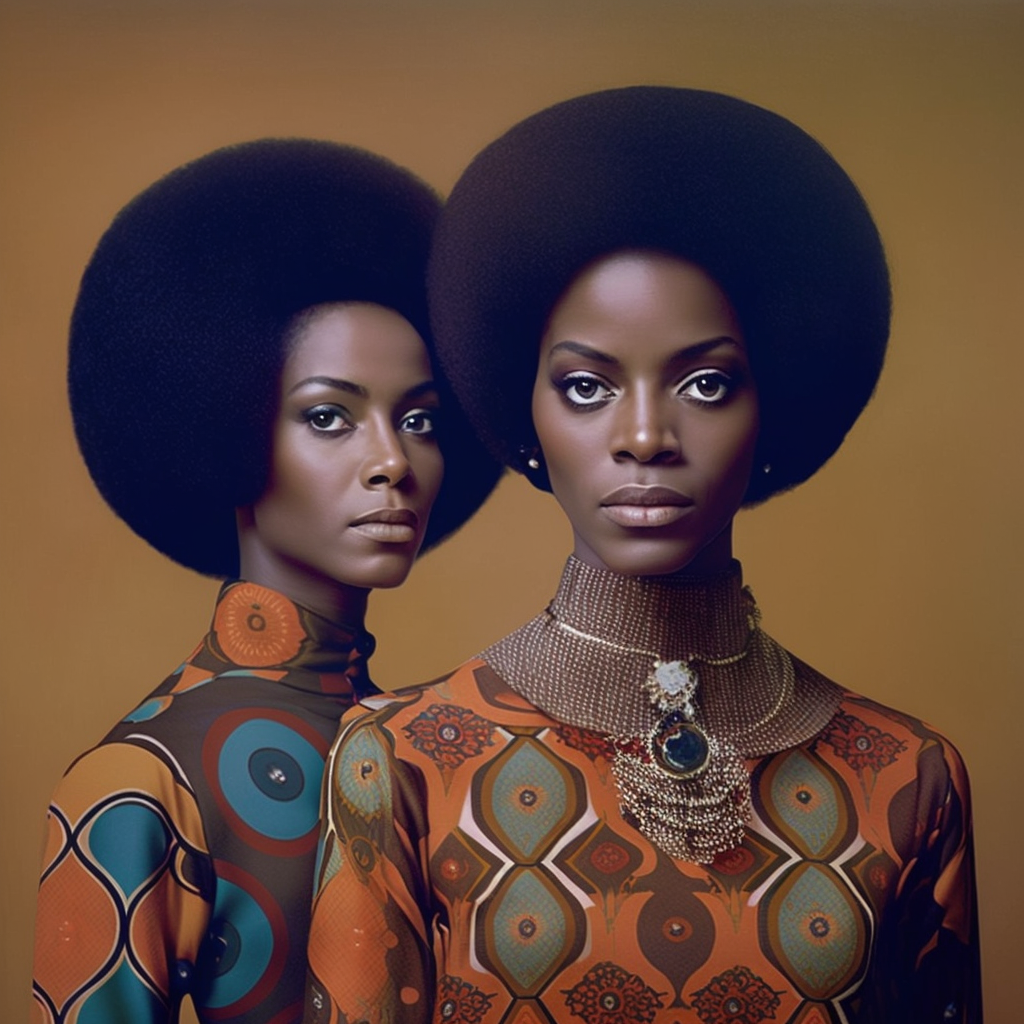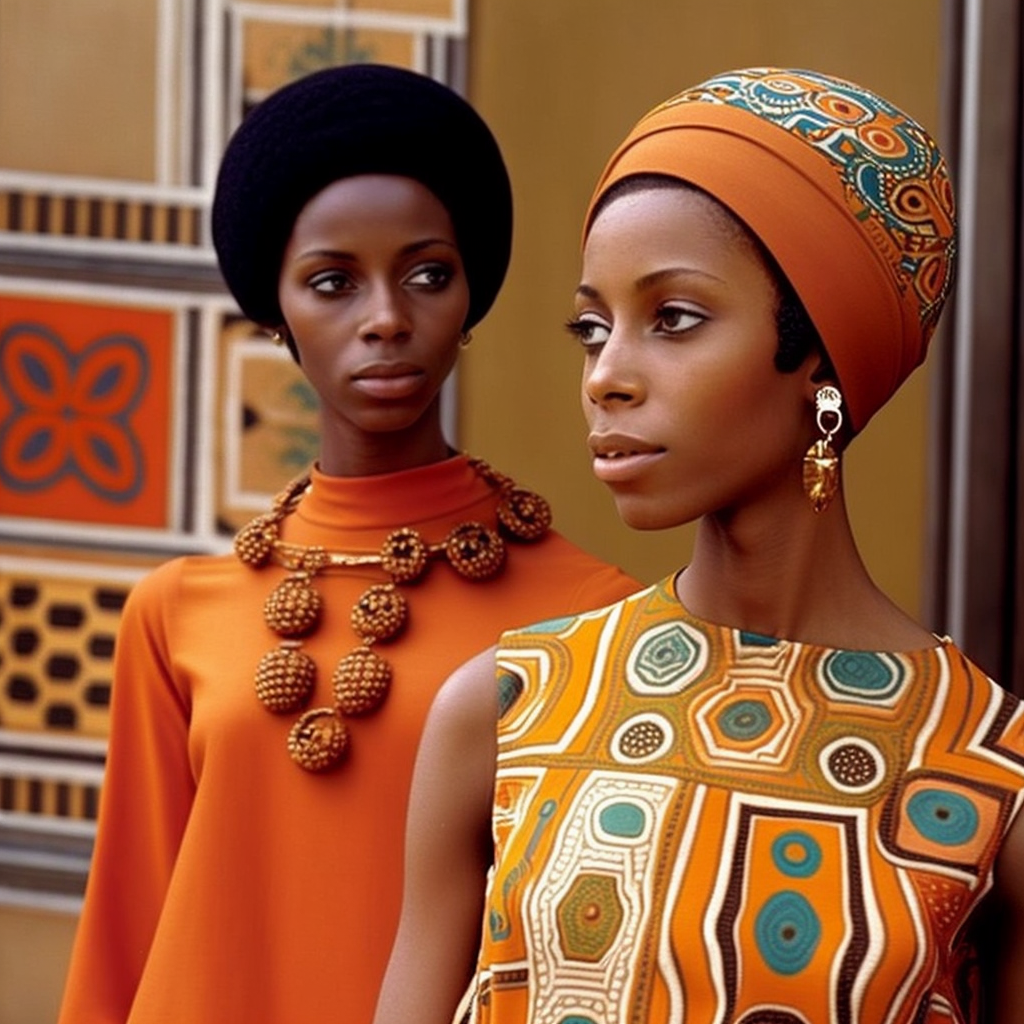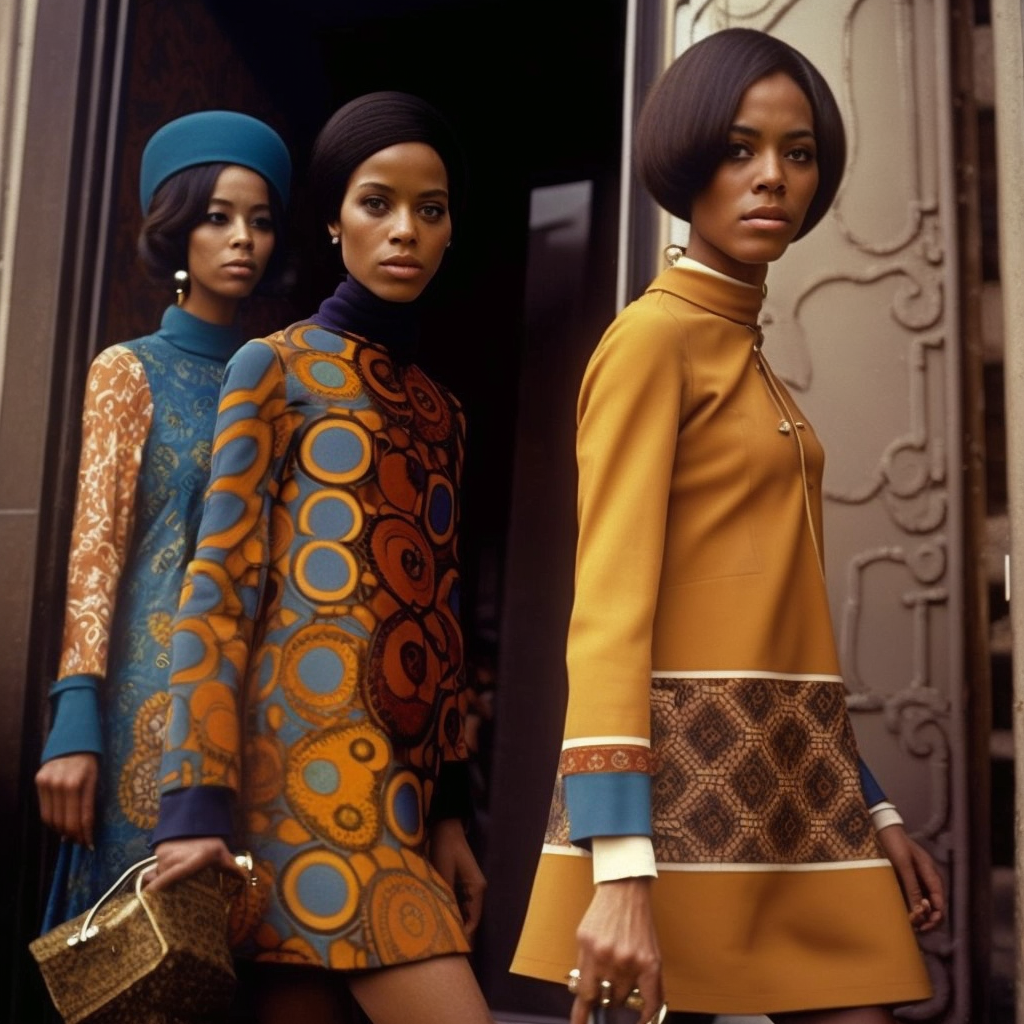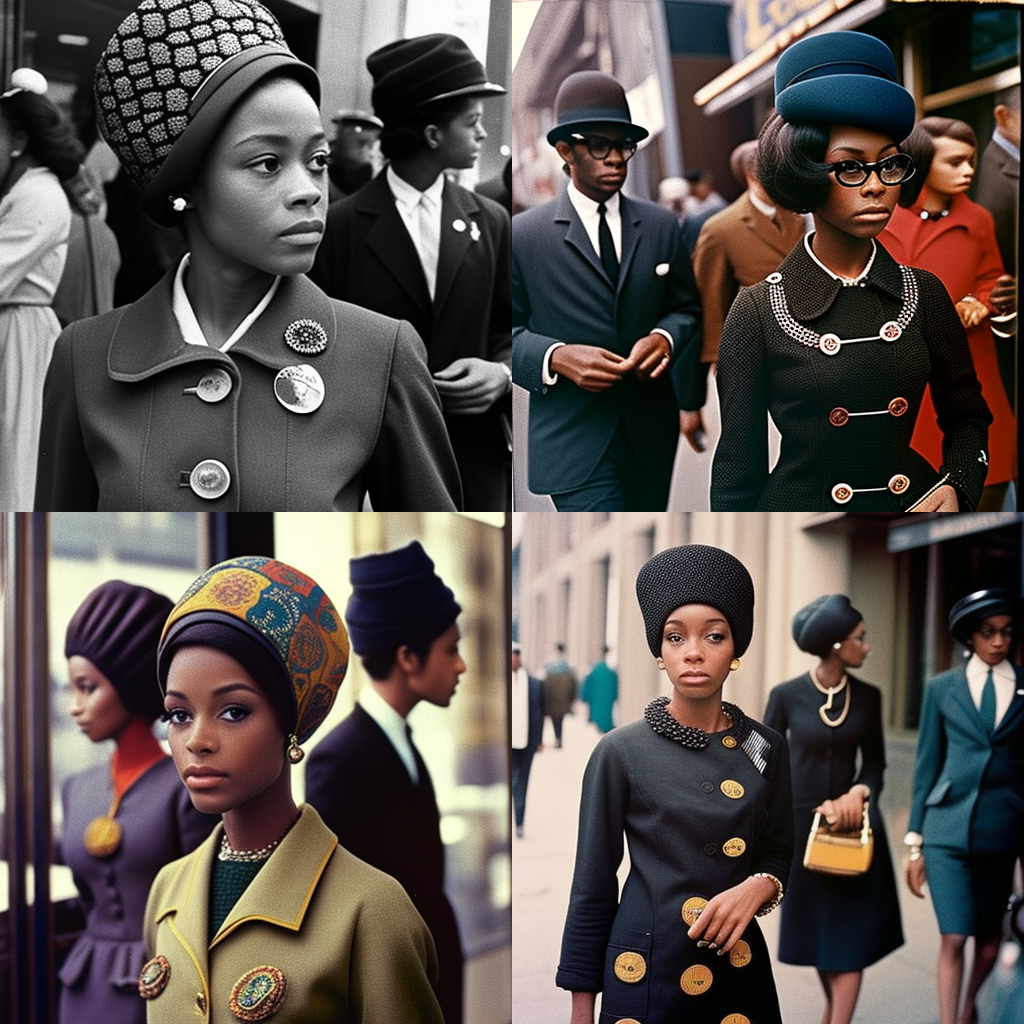While black Americans fought for their rights and equality, the Civil Rights Movement in the United States underwent significant development and advancement during the 1960s Black Fashion. During this time, fashion became a powerful tool for self-expression and empowerment, as black individuals used clothing to convey their pride, resistance, and political messages.
From the iconic afro hairstyle to colorful dashikis and kaftans, the fashion of the 1960s was bold and daring, reflecting the spirit of the time. The rise of mini-skirts and bell bottoms also had a significant impact on black fashion and culture, as these styles were embraced by many influential figures of the era.
In addition to clothing, political buttons, and accessories were also used to convey empowering messages and support for the Civil Rights Movement. Slogans such as “Black Power” and “Free Huey” became popular and were often displayed on clothing and accessories.
The impact of 1960s fashion on black culture and the Civil Rights Movement will be discussed in this article. The 1960s were known for their bold, empowering, and hip looks. Ultimately, we will reflect on the enduring legacy of 1960s black fashion and its influence on modern fashion and culture.
I. The Afro: 1960s Black Fashion
The afro haircut was one of the most distinctive 1960s fashion trends. The afro, with its thick, organic curls, came to symbolize African pride and resistance, rejecting European ideals of beauty and celebrating black uniqueness.
When black Americans started embracing their natural hair texture and style in the late 1950s and early 1960s, the afro emerged. As the Civil Rights Movement gained speed and black people looked for new methods to show their cultural identity, the afro rose to prominence in the middle of the 1960s.
Prominent people with afros, such as Jimi Hendrix and Angela Davis, helped the style become recognized as a hallmark of the time. They were making a strong statement about their identities and their dedication to black liberation by wearing their hair in this style.
In addition to its aesthetic value, the afro had a utilitarian purpose by enabling black people to enjoy their natural hair structure without resorting to harsh chemicals or straightening procedures. It was a fashion that praised blackness in all of its manifestations and embraced natural beauty.
Many people still opt to wear their hair in this enduring style, and the afro is still a potent symbol of black pride and self-expression.

II. Dashikis and Kaftans: 1960s Black Fashion
Dashikis and kaftans, which celebrated African culture and identity, rose to popularity among black people throughout the 1960s. Kaftans are long, flowing robes frequently made of cotton or silk, while dashikis are vibrant, loose-fitting blouses with African-inspired designs.
The increased interest in African culture among black Americans in the 1960s is what is responsible for the popularity of dashikis and kaftans. Many black people aspired to reconnect with their ancestors and cherish their cultural history as the Civil Rights Movement gained traction.
Influential people like Muhammad Ali and Miriam Makeba, who were recognized for their daring and audacious fashion choices, were known to wear dashikis and kaftans frequently. They were expressing their pride in their African origin and their dedication to black freedom by donning these clothes.
Dashikis and kaftans are still popular among black people today, and many fashion designers & merchants now offer contemporary takes on these time-honored looks. They serve as an effective reminder of the value of honoring cultural identity and tradition as well as the part that fashion can play in empowering people and communities.

III. Mini-skirts and Bell Bottoms: 1960s Black Fashion
Along with wearing traditional African attire, black people in the 1960s embraced 1960s fashion fads including miniskirts and bell bottoms. Fashion superstars like Diana Ross and Jimi Hendrix made these looks famous, and they soon spread across the culture.
Early 1960s miniskirts were a symbol of a rejection of established gender roles and a celebration of female sensuality. They frequently created a daring and edgy style when paired with go-go boots and vibrant tights.
Contrarily, bell bottoms were a preferred look among many powerful people of the time due to their wide-legged, flared form, brilliant colors, and widespread appeal. They represented a rejection of the conventional, traditional trends of the past as well as a celebration of individuality and self-expression.
Bell bottoms and miniskirts both had a big influence on black fashion and culture since they were a new way for women to express themselves and feel empowered. Black people were able to demonstrate their uniqueness and dedication to removing social barriers and building a more fair society by adopting these trends.
Several designers today are gaining inspiration from the edgy and risk-taking 1960s fashions as these fashion trends are still embraced and recreated in the industry. They act as a strong reminder of the crucial role that fashion can play in empowering individuals and communities and promoting a more just and equitable society.

IV. Political Buttons and Accessories: 1960s Black Fashion
In addition to clothing, political buttons, and accessories played a significant role in black fashion in the 1960s. On buttons, pins, and badges, slogans like “Free Huey” and “Black Power” were inscribed, providing a potent reminder of the social justice movements and political struggles of the time.
These accessories allowed individuals to show their support for the Civil Rights Movement and to convey empowering messages tangibly. They were often worn on clothing or displayed on bags and backpacks, serving as a constant reminder of the political struggles of the era.
In addition to buttons and pins, other accessories such as headscarves and jewelry were also used to convey political messages and celebrate black culture. African-inspired jewelry, such as cowrie shell necklaces and bracelets, became particularly popular, as they represented a celebration of African culture and heritage.
Today, political buttons and accessories continue to be popular ways to express political views and convey empowering messages. They act as a reminder of the significance of standing up against injustice and battling for a society that is more just.

V. Conclusion
Black culture and identity were significantly impacted by 1960s fashion trends, which stood for a rejection of conventional conventions and a celebration of uniqueness and self-expression. Fashion has long been a potent medium for spreading strong ideas and aiding social justice campaigns, from the famous afro to political buttons and accessories.
The legacy of 1960s black fashion is being cherished and reinterpreted today, with designers taking cues from the edgy and risk-taking looks of the time. These looks serve as a reminder of the value of honoring cultural identity and tradition as well as the part that fashion can play in empowering people and communities.
A relevant reminder of the importance of using clothes as a tool for both self-expression and societal change comes from the 1960s fashion trends. Black people in the 1960s were able to smash through boundaries and express their cultural history in a way that continues to inspire us now, whether it was through traditional African attire or daring and bright trends.

